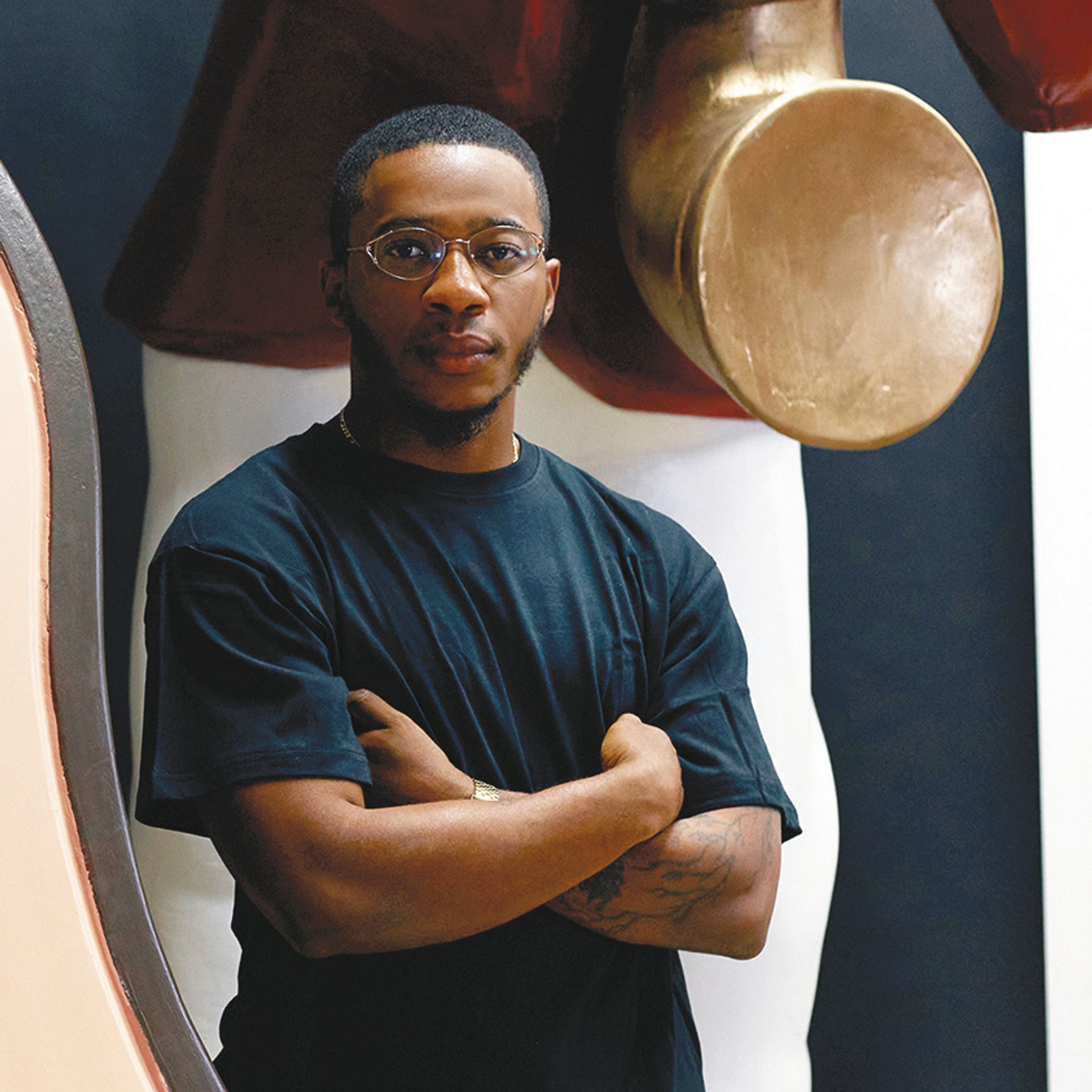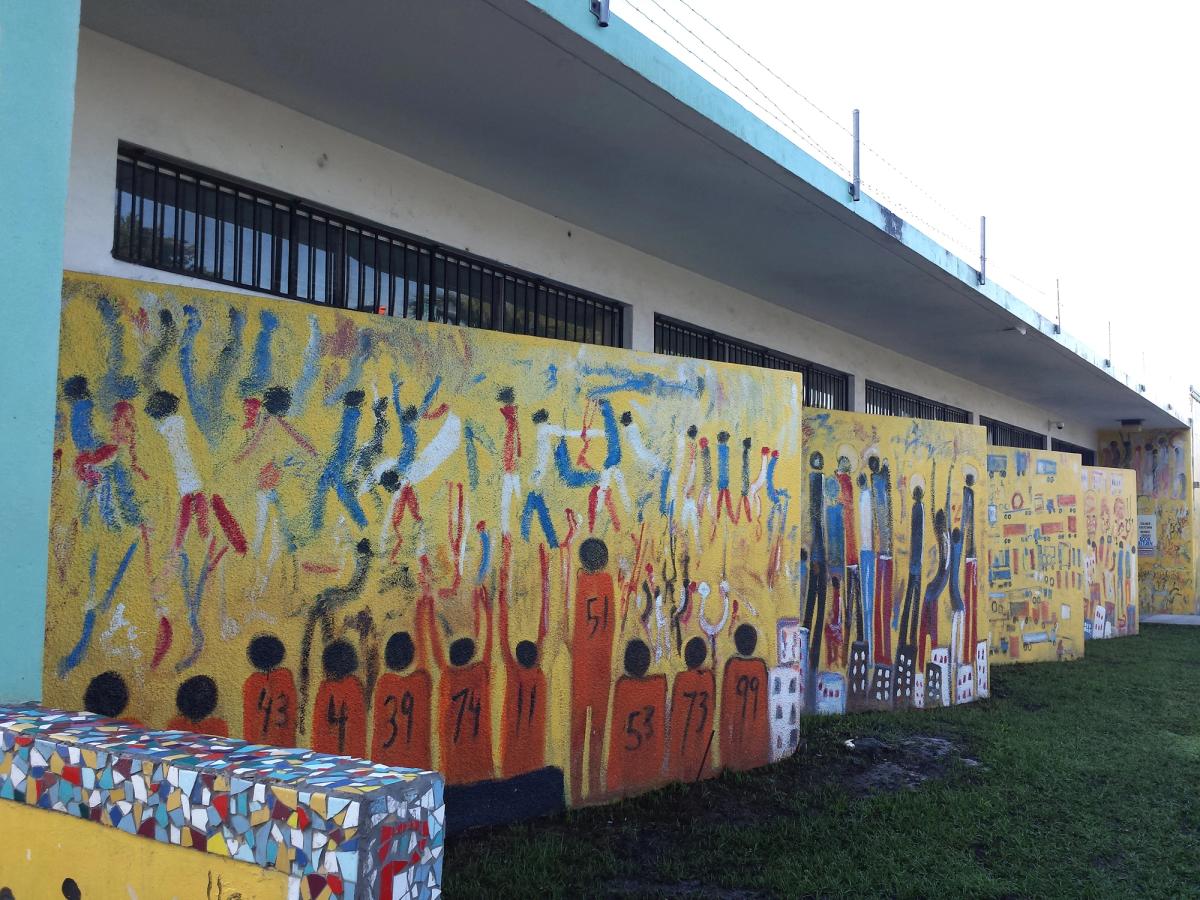The late Purvis Young, a native of Miami’s Overtown neighbourhood and arguably the city’s most beloved artist, developed a visual lexicon comprised of his own unique iconography. Horses—appearing in his paintings as dreamlike, occasionally transparent, figures in clusters—represented freedom, while eyes sometimes signified authoritarianism and an ever-present surveillance system.
Angels were everywhere, and Young once likened himself to these entities, who were sent as messengers to enact change and ease humankind’s troubles. “I make like I’m a warrior, like God sending an angel to stop war,” he once said. Young utilised everything he found as his canvas—including plywood, books and cardboard—attaching the works to the walls of what was then known as Good Bread Alley, or painting the walls themselves. But Young was also an avid reader, spending hours in Miami-Dade County’s libraries,
studying Rembrandt and Vincent van Gogh and making his own inspired sketches. He was eventually commissioned by the curator and librarian Barbara Young, along with the librarian and artist Margarita Cano, to create murals on the walls of these local institutions.
Though much of Young’s oeuvre is now housed at the Rubell Museum, some of his murals can still be found in Overtown. Everyday Life, painted on the exterior of the Culmer/Overtown Branch Library, was unveiled in 1984 and is still there today, accessible to all who pass by. The artist Reginald O’Neal—whose lifelike but lushly Impressionistic paintings are often rendered on city walls—also grew up in Overtown and remembers seeing Everyday Life’s jersey-clad figures and ghostly horses as a child (the mural was restored in 1991, a year before O’Neal was born). Below, he reflects on Young’s legacy, Everyday Life and the way public art can shape our memories.

Reginald O’Neal recalls seeing the mural as a child while playing in a local park Elliot Jiménez
The Art Newspaper: Do you remember when you first saw the mural?
Reginald O’Neal: I remember playing football and being in the park when I was five or six years old and noticing it. For a long time, I didn’t know the significance of this person. I learned who Purvis Young was when I started painting. There’s a part of the mural where people are wearing jerseys, and I always resonated with that. It always stuck with me.
Both you and Young are from Overtown; I’m curious about what his legacy means to you as an artist. Finding artists from one’s own neighbourhood feels meaningful.
There was a friend of mine who did a documentary on Purvis Young when I was 19 or 20 years old. When he showed me the documentary, I saw [Young] riding a bike throughout the neighbourhood and realised: “I know this entire area.” And I remember this like it was yesterday: I used to work at this restaurant in Wynwood and a customer told me that I resemble Basquiat—because of my hair at the time—and she gave me a note telling me to check out Basquiat, as well as Purvis Young and the Rubell Collection. I did some research and realised that some of his family lived in my neighbourhood.
Are you familiar with the history of that specific mural?
I’m not, but the Gibson Park that I know is completely different from the Gibson Park that’s there today. When you reconstruct buildings and neighbourhoods, you change people’s memories.
My community doesn’t always go to galleries or museums. When I put the work on the wall, everyone can receive itReginald O'Neal
You’re also a muralist, so you understand about the experience of making paintings in public.
When I paint a mural in my own neighbourhood, it becomes a bit personal. Most of the time, on average, we perceive art in music: we listen to music or we look at photos of our favourite musicians, but we don’t necessarily look at paintings of our own community. I put that kind of image in galleries. But my community doesn’t always go to galleries or museums. When I put the work on the wall, everyone can receive it. I’ve always felt that way. That’s why I didn’t know who Purvis Young was growing up—we weren’t attentive to that. If I do a mural outside of a local space, everybody gets to experience it, just like Purvis’s mural on the library.
And we don’t always think that these things live in our subconscious, but they do. With murals, if you’re looking for directions and you recognise a particular piece, you know where to go. People tend to live with public artworks. Whenever I paint a mural, it’s important to me that it depicts something that the community can actually love and really relate to.
• Purvis Young’s Everyday Life can be seen at the Culmer/Overtown Branch Library, 350 NW 13th Street, Miami


